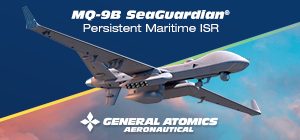
The US Space Force announced the incoming, eight flight of the X-37B uncrewed spaceplane, which is due for launch at the end of the month.
The X-37B will be launched for Orbital Test Vehicle (OTV-8) on Aug. 21, 2025, from Kennedy Space Center, in Florida. It will be carried into space by a a SpaceX Falcon 9 rocket, designated USSF-36.
One important experimental payload for this flight will be the “world's highest performing quantum inertial sensor ever used in space”, according to the Space Force. This payload will demonstrate capabilities useful to mature a solution for accurate unaided navigation in space by detecting rotation and acceleration of atoms, eliminating the need for satellite networks like traditional GPS. The current GPS system is vulnerable to jamming and disruptions and there has been increasing interest in Quantum solutions to eliminate the problem at its root.
Quantum inertial sensors would be useful for navigation in cislunar space, so they also promise to push the technological frontiers of long-distance space travel and exploration.
This particular payload is looking at in-space navigation solutions that would be employed to reduce the vulnerability of US spacecrafts to enemy and environmental action. The importance of this development was underlined by Col. Ramsey Horn, Space Delta 9 Commander, which is notable as Delta 9 is the unit tasked with “orbital warfare”.
The experimental Quantum payload was developed by Vector Atomic for the Pentagon’s Defense Innovation Unit (DIU). The company is a startup from California, focused on commercializing use of atomic instruments.
The other experimental payload is a laser for communications purposes. The use of laser for in-space and space-to-earth communications is considered very attractive as it would augment bandwidth while also drastically reducing vulnerability to enemy interception. The the Space Development Agency is already planning for laser comms to be a key and defining capability of its future Low Earth Orbit constellations for tracking missile threats (Tracking layer constellation) and relaying that tracking data down to earth (Transport Layer constellation). The use of lasers is meant to create an “hack-proof internet” in space, extending hopefully down all the way to commanders and “shooters” on the surface of the planet to drastically cut down response times to contrast, in particular, manoeuvring hypersonic threats.
The 5th Space Operations Squadron, part of Delta 9, is in charge of flight operations of the X-37B in partnership with the Air Force Rapid Capabilities Office (ARFL). The 7th flight of the X-37B concluded back in March after more than a year in orbit: 434 days were spent in Low Earth Orbit carrying out aerobraking manoeuvres to adjust orbit around earth for safe deployment of payloads. This is a manoeuvre technique that uses atmospheric drag during multiple orbital passes to change the spacecraft’s trajectory while conserving fuel and creating no propulsion signature observable by an adversary.
The X-37B first flight was back in 2010. Its longest mission was the 6th, with 908 days spent in space.








